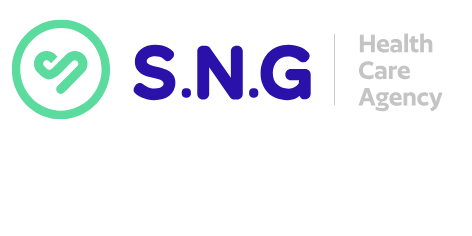The Care Quality Commission (CQC) is the independent regulator of health and social care services in England, ensuring that providers deliver safe, effective, compassionate, and high-quality care. For healthcare teams, a CQC inspection can feel like a high-stakes moment, but with the right preparation, it’s an opportunity to showcase the excellent care your service provides. At SNG Healthcare, we understand the pressures of inspections and the importance of being regulator-ready. With the CQC’s inspection approach evolving in 2025 to incorporate a more data-driven and digital framework, thorough preparation is more critical than ever.
This article offers a detailed guide on preparing your team for CQC inspections, drawing on the latest insights and best practices. We’ll cover how to embed a culture of compliance, equip staff with the knowledge to handle inspector questions, and ensure your service shines during the assessment process. By the end, you’ll have a clear roadmap to navigate inspections with confidence.
Introduction
The Care Quality Commission (CQC) is the cornerstone of quality assurance in England’s health and social care sector. Its inspections evaluate whether services are safe, effective, caring, responsive, and well-led, ensuring that people receive the high-quality care they deserve. For healthcare providers, a CQC inspection is both a challenge and an opportunity to demonstrate excellence.
With the CQC introducing a new Single Assessment Framework in 2025, inspections are becoming more data-driven, focusing on quality statements and real-time evidence. However, the core of inspections remains unchanged: feedback from service users, their families, and staff is paramount. Preparing your team to confidently engage with inspectors, provide robust evidence, and showcase your service’s strengths is essential for a successful outcome.
At SNG Healthcare, we’re committed to helping care providers achieve outstanding CQC ratings. This guide outlines practical steps to prepare your team for inspections, ensuring compliance and fostering a culture of continuous improvement.
Why Preparation Matters
CQC inspections assess every facet of your service, from care delivery to governance and staff competence. A well-prepared team can:
- Demonstrate Compliance: Show inspectors that your service meets the CQC’s five key standards.
- Boost Confidence: Reduce staff anxiety by familiarising them with the inspection process.
- Highlight Excellence: Showcase innovative practices and person-centred care.
- Avoid Pitfalls: Address gaps before they’re flagged by inspectors.
Failing to prepare risks lower ratings, enforcement actions, or reputational damage. By embedding inspection readiness into your daily operations, you can approach assessments with confidence.
Step 1: Build a Culture of Compliance
The foundation of CQC readiness is a culture where quality and compliance are everyone’s responsibility. Here’s how to foster this mindset:
Make CQC a Regular Discussion Point
Include CQC inspections and standards in team meeting agendas. Discuss the five key questions—safe, effective, caring, responsive, and well-led—and how they apply to daily work. This keeps compliance front of mind and ensures staff understand the regulator’s expectations.
Conduct Mock Inspections
Simulate CQC inspections to familiarise staff with the process. Assign team members to act as inspectors, reviewing care plans, observing practices, and asking typical CQC questions (see Step 3). Mock inspections help identify gaps and build staff confidence. For example, a practice run might reveal outdated policies or staff unfamiliarity with safeguarding protocols, allowing you to address issues proactively.
Create a Shared Resource Hub
Centralise all CQC-related documents—policies, procedures, training records, and audit logs—in a shared, accessible hub. This ensures staff can quickly locate evidence during inspections. Consider using digital tools like compliance software to streamline documentation management.
Plan for Absences
Ensure contingency plans are in place if key staff, such as the registered manager, are unavailable during an inspection. Designate a senior team member to step in and brief them on critical responsibilities, such as presenting the service’s performance to inspectors.
 Step 2: Train and Empower Your Team
Step 2: Train and Empower Your Team
Staff are the heart of your service, and their interactions with inspectors can significantly influence the outcome. Comprehensive training and empowerment are key to success.
Provide Regular Training
Ensure all staff are trained in critical areas, including:
- Safeguarding: Understanding how to identify and report abuse or neglect.
- Infection Prevention and Control (IPC): Adhering to protocols, especially post-COVID-19.
- Mental Capacity Act and Deprivation of Liberty Safeguards: Ensuring consent and rights are respected.
- Medicines Management: Safely administering and storing medications.
Maintain a workforce training matrix to track certifications and refreshers. Inspectors may request proof of training, so keep records up to date.
Prepare for Common Questions
The CQC uses Key Lines of Enquiry (KLOEs) to structure inspections, focusing on specific areas. Below are some common questions staff might face, along with tips for preparation:
- Safeguarding: “How do you protect people from abuse?”
Train staff to explain risk assessments, reporting procedures, and how they ensure dignity and consent. - Risk Management: “How are risks to service users assessed and monitored?”
Ensure staff can describe how they identify, document, and mitigate risks, such as falls or medication errors. - Staffing: “Are there enough qualified staff to meet people’s needs?”
Staff should highlight rota planning, training, and how they adapt to staffing challenges, e.g., using agency workers. - Medicines: “How do you ensure safe medicine administration?”
Prepare staff to discuss storage, error reporting, and training for administering medications. - Infection Control: “How do you prevent infections?”
Staff should explain IPC protocols, PPE usage, and adaptations made during the pandemic. - Compassionate Care: “How do you treat people with kindness and respect?”
Encourage staff to share examples of person-centred care, such as respecting cultural preferences or supporting emotional wellbeing. - Governance: “How do you ensure quality and compliance?”
Staff should describe audits, incident reviews, and how learning is embedded.
Conduct role-play sessions to practice answering these questions. This builds confidence and ensures responses are clear and evidence-based.
Empower Staff to Speak Up
Encourage staff to view inspectors as partners, not adversaries. Remind them that honesty and transparency align with the CQC’s duty of candour. If staff don’t know an answer, they should feel comfortable saying, “I’m not sure, but I can find out or direct you to the right person.”
Step 3: Showcase Your Service’s Strengths
Inspectors want to see evidence of high-quality, person-centred care. Use these strategies to highlight your service’s strengths:
Prepare a Welcome Pack
Create a welcome pack for inspectors, including:
- A staff rota for the day.
- Names of leads for key areas (e.g., safeguarding, IPC).
- A brief overview of your service’s achievements, such as innovations or positive feedback.
This sets a professional tone and helps inspectors navigate your service efficiently.
Highlight Innovation
The CQC values providers who innovate to improve outcomes. Share examples, such as:
- Using digital tools to track incidents and improve care planning.
- Partnering with local organisations to enhance community support.
- Implementing new training to address health inequalities.
Link innovations to tangible benefits for service users, such as improved safety or emotional wellbeing.
Engage Service Users and Families
Involve service users and their families in the inspection process. Encourage them to share positive experiences via comment cards or interviews. Conduct regular satisfaction surveys to gather feedback and demonstrate responsiveness to concerns.
Step 4: Master Documentation and Evidence
Robust documentation is the backbone of a successful inspection. Inspectors will review records to verify compliance, so ensure the following are up to date and accessible:
- Care Plans: Tailored to individual needs and regularly reviewed.
- Risk Assessments: Comprehensive and updated to reflect current risks.
- Incident Logs: Detailed, with evidence of actions taken and lessons learned.
- Policies and Procedures: Covering safeguarding, IPC, complaints, and whistleblowing.
- Staff Records: Including training certificates, appraisals, and supervision notes.
Use digital systems to organise records, ensuring they’re easily retrievable. Conduct internal audits to spot gaps before inspectors do.
Step 5: Navigate the New Single Assessment Framework
The CQC’s 2025 Single Assessment Framework introduces a more flexible, data-driven approach. Key changes include:
- Quality Statements: Replacing KLOEs, these outline what good care looks like and link to regulations.
- Evidence Categories: Inspectors collect evidence under six categories, such as feedback, observations, and records.
- Increased Data Use: The CQC leverages local and national data to inform inspections.
To prepare:
- Review the new quality statements on the CQC website and align your practices accordingly.
- Ensure your data collection (e.g., incident reports, satisfaction surveys) is robust and reflects best practices.
- Conduct mock inspections using the new framework to identify areas for improvement.
Step 6: Post-Inspection Actions
After the inspection, you’ll receive a report detailing findings and your rating (Outstanding, Good, Requires Improvement, or Inadequate). Regardless of the outcome:
- Review the Report: Share findings with your team and celebrate successes.
- Address Issues: Create an action plan to tackle any identified gaps promptly.
- Embed Learning: Use feedback to drive continuous improvement.
If your rating is less than desired, don’t panic. The CQC values providers who take swift action to improve, and a follow-up inspection can reflect your progress.
Conclusion
Preparing for a CQC inspection requires diligence, teamwork, and a commitment to excellence. By embedding compliance into your culture, training staff to confidently engage with inspectors, and showcasing your service’s strengths, you can turn inspections into an opportunity to shine. At SNG Healthcare, we believe that outstanding care starts with outstanding preparation. Use this guide to empower your team, streamline your processes, and achieve the CQC rating your service deserves.
For more support, consider tools like compliance software or consultancy services to enhance your readiness. Stay proactive, stay compliant, and let your dedication to quality care speak for itself.
Sources:
- Care Quality Commission: www.cqc.org.uk
- British Medical Association: www.bma.org.uk
- The Access Group: www.theaccessgroup.com
- Care Learner: www.carelearner.co.uk[](https://www.carelearner.co.uk/post/cqc-inspections-in-2025-what-s-new-and-how-to-prepare)

